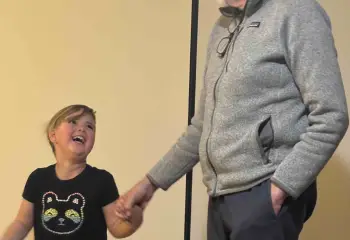Love is at the heart of the human story. It connects us to each other, drives us to nurture and protect, and gives richness and meaning to our lives. Though love can feel like a mystery—a force beyond science—research reveals its deep roots in our biology and its core role in our survival as a species.
While romantic love often steals the spotlight, it’s just one piece of the puzzle. Love comes in many forms—compassionate, companionate, love for family, friends, and even strangers—each serving a unique role. What unites them is that they all involve:
- a deep, unselfish commitment to nurture another person’s well-being—even to put their interests before your own;
- emotional, cognitive, and behavioral dimensions—they involve our feelings toward others (in a fleeting moment or over long periods of time), our perceptions of them (we really see them), and actions we take to support them or express our care for them.
In that light, love doesn’t just give us warm feelings and inspire affection and devotion. It also helps us bridge divides, cooperate, and promote collective well-being. Love is key to leading a flourishing, meaningful life—and it comes in many varieties:
- Self-love rests on three pillars: Self-contact means paying attention to yourself; self-acceptance is embracing all parts of yourself—strengths and flaws alike; self-care turns this awareness into action toward nurturing your well-being. Researchers distinguish self-love from narcissism or selfishness.
- Romantic love is described as a dynamic blend of three elements: passion, intimacy, and commitment. Passion fuels the initial spark and physical attraction between partners. Intimacy builds the emotional closeness and trust that bind partners together, creating a sense of shared connection. Commitment ensures the relationship’s longevity by solidifying dedication and partnership through life’s ups and downs.
- Familial love is the deep, enduring love shared among family members, particularly between parents and children, often rooted in selflessness and sacrifice. Researchers view this love as instinctive and deeply tied to our evolutionary history, growing naturally through shared experiences, familiarity, and mutual dependence.
- Companionate love is a steady, enduring love built on intimacy, commitment, and mutual care. It’s the warmth of deep connection, the security of unwavering support, and the quiet joy of shared lives. Found not only in partnerships like marriage but also in friendships (also referred to as philia), neighborly ties, and even workplace connections.
- Compassionate love centers on feelings and behaviors of caring, concern, and tenderness toward others, regardless of whether you are related to them or believe that your care will be reciprocated. It is closely linked to the concept of altruistic love, a deep desire to help others without expecting personal gain or anything else in return.
- Loving across differences is based on research on intergroup relations showing that we can bridge boundaries by expanding our sense of self to include others—even those we see as different from us. A key step in this process, called “self-expansion,” broadens our identity to encompass the identities and perspectives of other groups.
- Love of strangers and humanity is a universal love that transcends personal ties, embodying care for all. Rooted in empathy and feelings of connection to our shared human family, it inspires selfless action to ease suffering, protect rights, and foster global kinship. The related concept of “agape” is unconditional and boundless love—love beyond race, creed, or circumstance, celebrated in world religions and deeply tied to compassion and altruism.
- Love of animals, nature, and the sacred. Love of animals and pets reflect our deep connection to other living beings, fostered through care, adoration, and companionship. Love of nature (biophilia) awakens awe and gratitude for the natural world, grounding us in our place within it. Divine love, a transcendent bond with the sacred or spiritual, offers profound meaning and connection beyond the self.
Evolutionary scientists see the origins of love as an integral part of our adaptive success as a species. As Anna Machin writes in Why We Love, “Love stems from cooperation, and cooperation is our route to survival.” Love didn’t just appear as a romantic ideal; it evolved as a powerful motivator, driving early humans to form lasting social bonds, protect one another, and create communities that ensured survival. Those capable of love forged the connections necessary to thrive, pass on their genes, and shape the future of our species.
This perspective suggests that love is not simply a feeling—it’s a core biological drive that fundamentally shaped who we are today.








